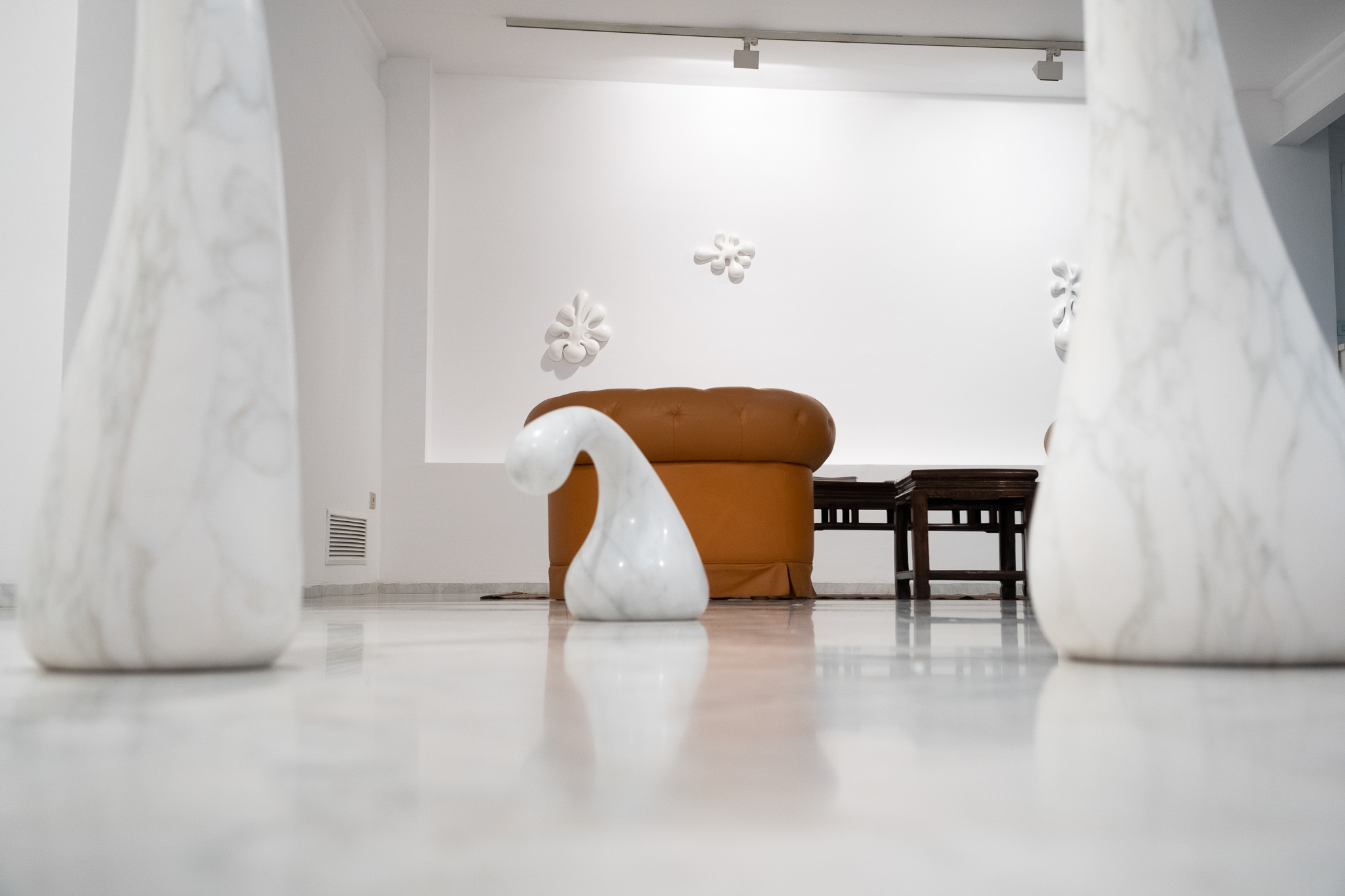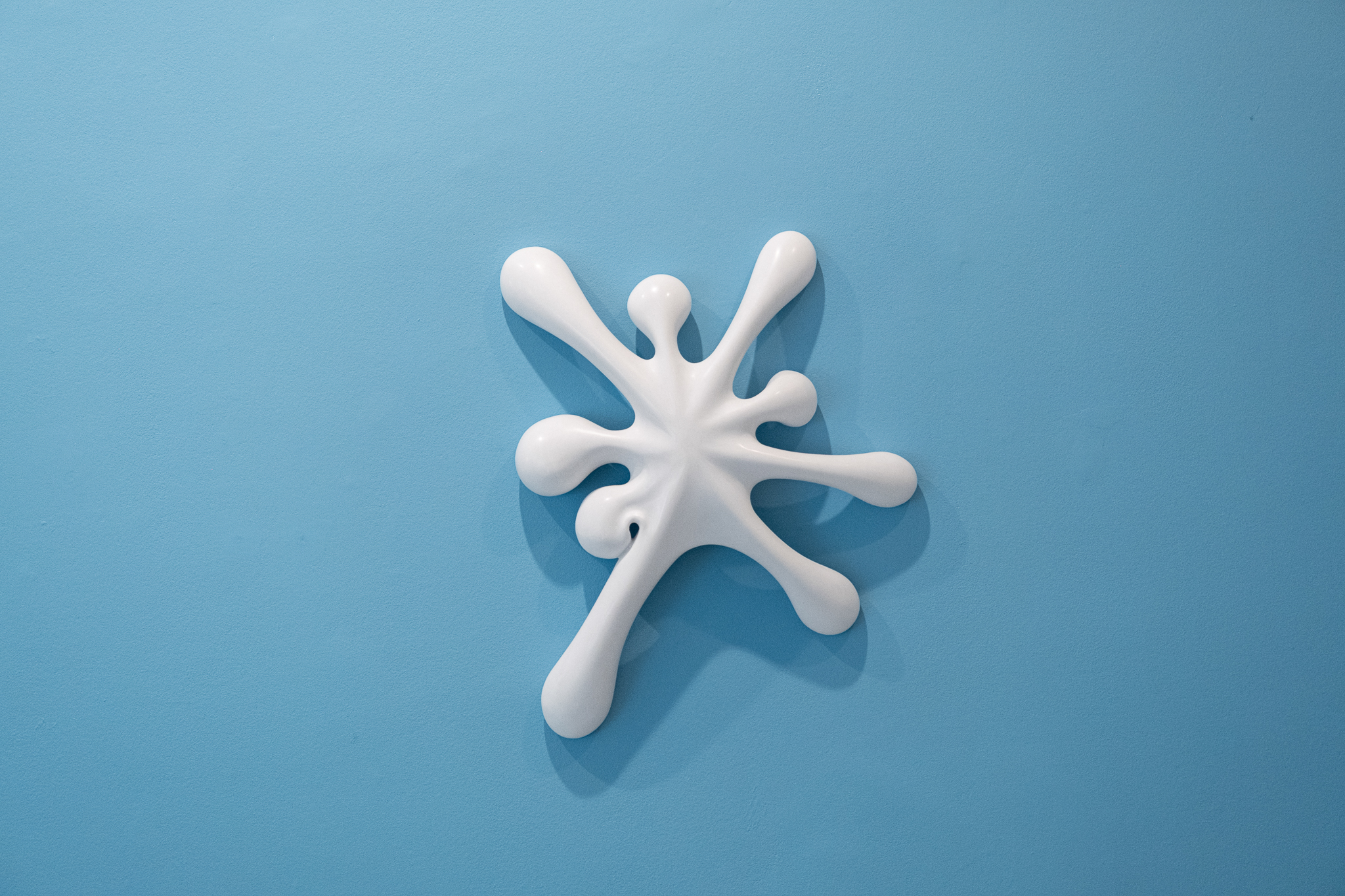Entrevistando a los artistas - Julia Venske / Interview with artists - Julia Venske

*(English below)
Venske & Spänle es un tándem de escultores alemanes con los que compartimos un largo y exitoso recorrido.
Además de las diversas exposiciones inauguradas en la galería durante nuestros 20 años de trayectoria, junto a ellos hemos realizado dos de nuestros grandes proyectos culturales, “Eclosión en Valencia 2014” y “Inventar el espacio 2020 · Intimidades colectivas”. Con el primero sus esculturas invadieron parte del cauce del Río Turia, el Museo de Bellas Artes de Valencia, así como muchas tiendas emblemáticas de la ciudad, mientras que con el segundo dimos visibilidad a las zonas comunes de un histórico edificio del centro de Valencia.
Venske & Spänle son dos artistas para los que el entorno y la relación de las obras con el mismo cobra una gran importancia, y es por ello que con la siguiente entrevista esperamos puedas entender más de cerca su punto de vista, así como, su nueva exposición que puedes disfrutar por tiempo limitado en nuestra galería de arte contemporáneo en la calle Pascual y Genís 19.

Exposición "As if we were alone" de los artistas Venske & Spänle en la Galería Ana Serratosa
¿A qué se debe el título de la exposición “As if we were alone”?
Mientras hacíamos las piezas pensamos en como ahora tras la crisis de la Covid, la guerra de Ucrania, o la crisis económica que se avecina, seguimos comportándonos como si estuviéramos solos en este planeta.
El mármol, material del que se componen todas nuestras obras, es muy delicado, y por eso pensamos que sería un buen título para reflexionar cómo podemos emplear nuestro tiempo y comportarnos de una manera un poco más humilde.
¿Qué relación tienen esta nueva colección de piezas con las anteriores?
Con esta nueva colección trabajamos en paralelo a otras series más antiguas. Por ejemplo, para el proyecto de Cabillers desarrollamos una serie en la que las piezas no pueden levantarse del suelo, y nos gustó la idea. Esto evolucionó hasta convertirse en trabajos de pared, como se puede ver en esta nueva exposición, pero manteniendo en todo momento esa cualidad de ameba o de ser unicelular.
¿Existe alguna razón por la que unas piezas sean moteadas (mármol de Carrara) y otras sean completamente lisas (mármol de Lasa)?
El mármol de Lasa es muy singular, completamente blanco, y luego se encuentra el mármol de Carrara que es muy diferente con todos esos dibujos naturales.
Con este último pensamos en hacer formas muy simples con la intención de centrar la atención en el material y sus dibujos. En cambio las piezas de pared preferimos hacerlas todas con Lasa, pues por un lado resulta agradable la sensación que crea tenerlo todo en un mismo tono, y por otro es un material que permite hacer formas más extravagantes que la Carrara.

"Dudu Ragno", 2021, Mármol de Lasa Pulido, obra expuesta en Galería Ana Serratosa
¿De qué manera quedan reflejados vuestros viajes en las obras?
Las esculturas siempre viajan con nosotros ya que nos gusta visualizarlas en diferentes entornos, y ver cómo se relacionan con ellos, especialmente en espacios exteriores.
En esta exposición decidimos crear con Photoshop un foto-montaje colocando nuestras piezas en paisajes de nuestro último viaje. De este modo ya no solo llevamos las piezas a nuevos entornos, sino que podemos traer esos espacios hacia el espectador y hacerle reflexionar sobre por qué esa pieza se encuentra ahí y cómo interactúa con el medio.
¿Por qué es importante para vosotros colocar las esculturas en el suelo o las paredes? ¿Por qué no mantenéis la idea tradicional de ubicarlas en vitrinas o peanas?
El pedestal está concebido para crear un espacio en sí mismo, una pequeña habitación que se aísla del espacio donde se encuentra, todo ello con el fin de dotar de mayor relevancia a la pieza que expone.
Nuestras piezas tienen sentido cuando se relacionan con el entorno. Esta relación es una parte más de la obra, y con una vitrina o peana pierdes esa conexión.
(Entrevista realizada a Julia Venske, la mitad de este tándem artístico).
Venske & Spänle is a tandem of German sculptors with whom we share a long and successful journey.
In addition to the various exhibitions opened in the gallery during our 20 years of experience, together with them we have realized two of our great cultural projects, "Eclosión en Valencia 2014" and "Invent the space 2020 collective intimidations". With the first his sculptures invaded part of the riverbed of the Turia River, the Museum of Fine Arts of Valencia, as well as many emblematic shops of the city, while with the second we gave visibility to the common areas of a historic building in the center of Valencia.
Venske & Spänle are two artists for whom the environment and the relation of the works with it takes on great importance, and that is why with the following interview we hope you can understand more closely their point of view, as well as, his new exhibition that you can enjoy for a limited time in our gallery of contemporary art in the street Pascual and Genís 19.

"As if we were alone" Exhibition by Venske & Spänle at Galería Ana Serratosa
What is the reason for the title of the exhibition "As if we were alone"?
As we made the pieces we thought of how now after the Covid crisis, the war in Ukraine, or the economic crisis that is coming, we continue to behave as if we were alone on this planet.
Marble, the material of which all our works are composed, is very delicate, and so we thought it would be a good title to reflect on how we can spend our time and behave in a slightly more humble way.
How does this new collection of pieces relate to the previous ones?
With this new collection we work in parallel to other older series. For example, for the Cabillers project we developed a series in which the pieces cannot be lifted from the ground, and we liked the idea. This evolved to become wall works, as can be seen in this new exhibition, but maintaining at all times that quality of amoeba or of being unicellular.
Is there a reason why some pieces are mottled (Carrara marble) and others are completely smooth (Lasa marble)?
The Lasa marble is very unique, completely white, and then you find the Carrara marble which is very different with all those natural drawings.
With the latter we thought of making very simple shapes with the intention of focusing attention on the material and its drawings. On the other hand, we prefer to make all the wall pieces with Lasa, because on the one hand it is pleasant to have everything in one tone, and on the other it is a material that allows us to make more extravagant shapes than the Carrara.

"Dudu Ragno", 2021, Polished marble Lasa, exhibited artwork at Galería Ana Serratosa
How are your journeys reflected in the works?
Sculptures always travel with us because we like to visualize them in different environments, and see how they relate to them, especially in outdoor spaces.
In this exhibition we decided to create with Photoshop a photo-montage placing our pieces in landscapes of our last trip. In this way we no longer only take the pieces to new environments, but we can bring those spaces to the viewer and make him reflect on why that piece is there and how it interacts with the medium.
Why is it important for you to place the sculptures on the floor or walls? Why don’t you keep the traditional idea of placing them in cabinets?
The pedestal is designed to create a space in itself, a small room that is isolated from the space where it is located, all in order to give greater relevance to the piece that exhibits.
Our pieces make sense when they relate to the environment. This relationship is another part of the work, and with a showcase or stand you lose that connection.
(Interview with Julia Venske, half of this artistic tandem).